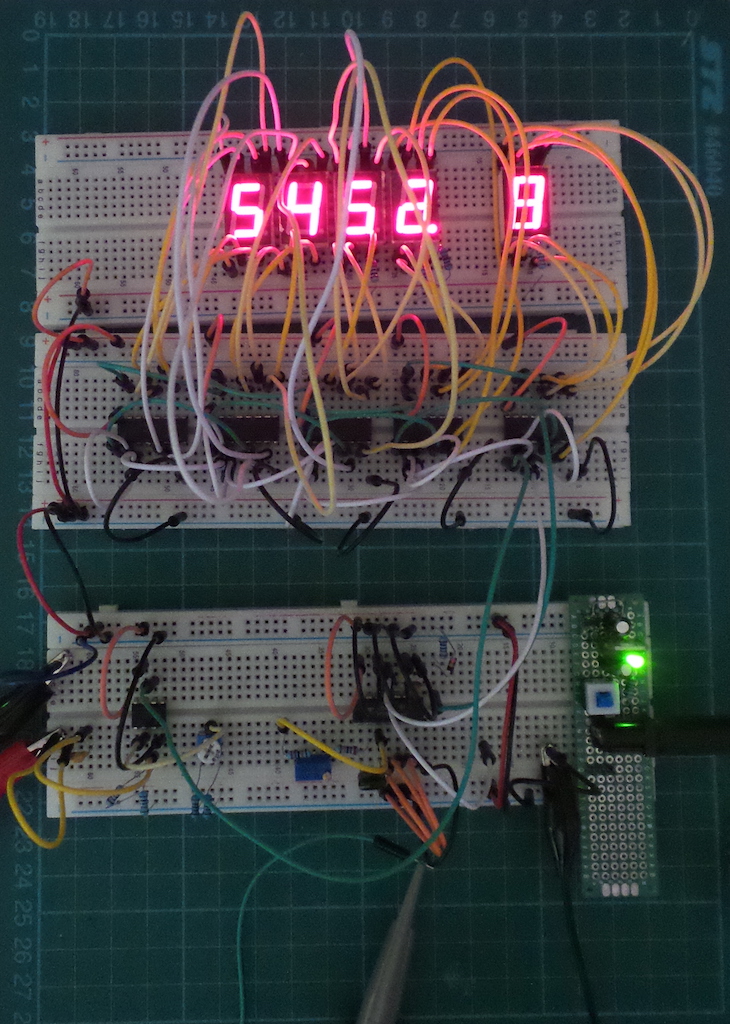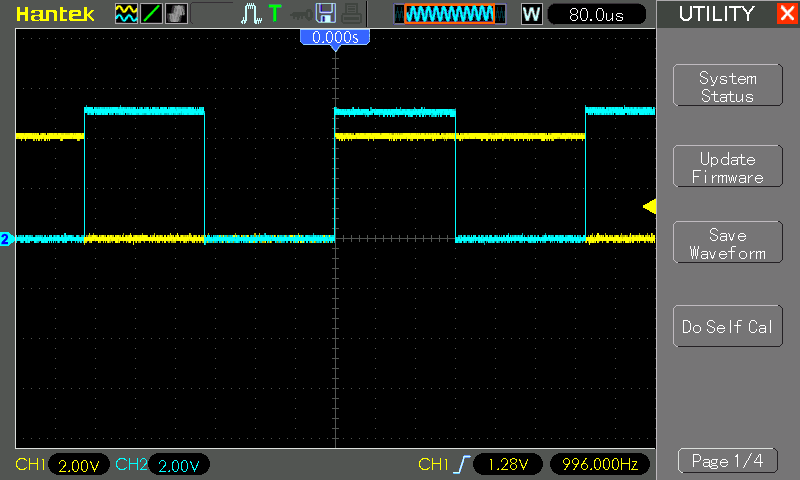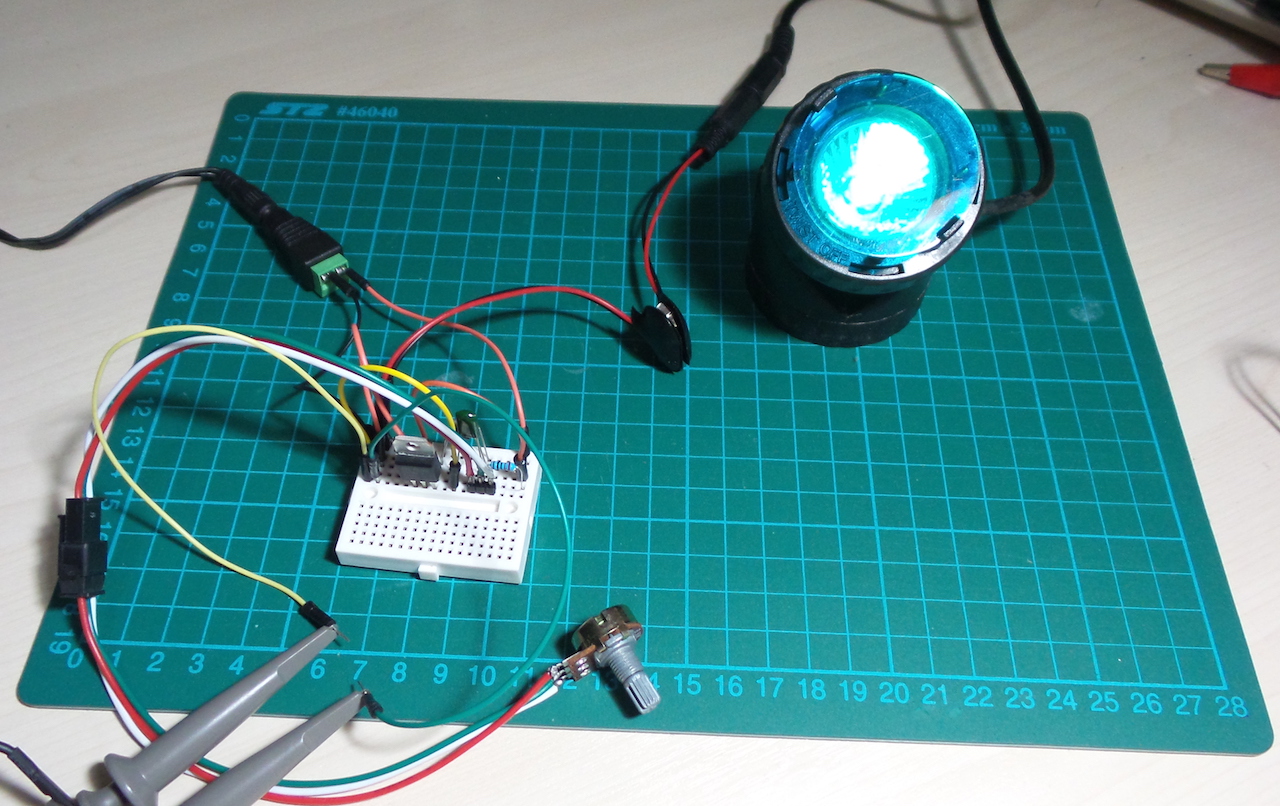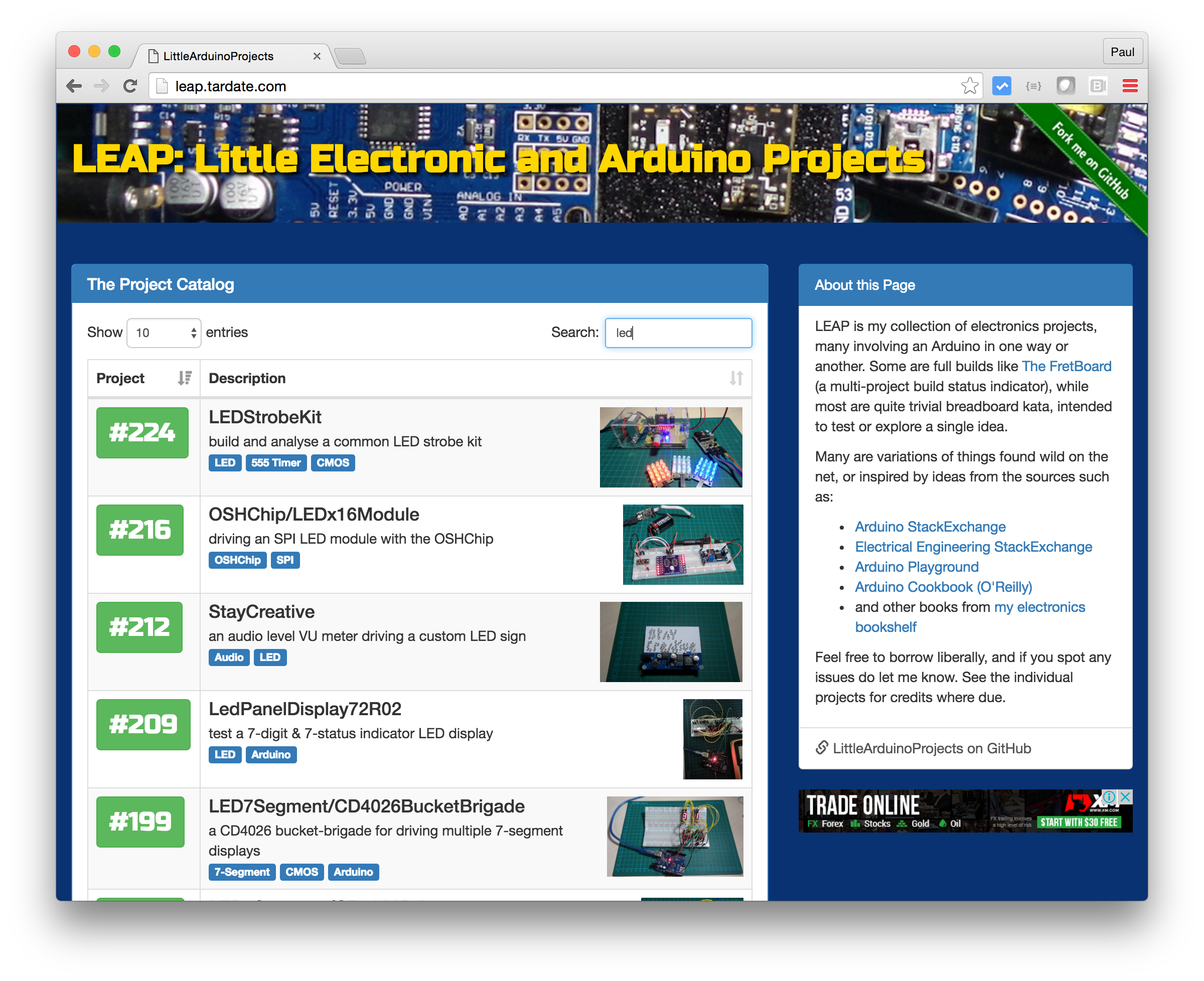LEAP#207 Frequency Counter
Testing a CMOS frequency counter circuit with a 100Hz - 5MHz range.
I found this circuit published in Electronics magazine (Sep 16 1976). It's a classic demonstration of the CD4026 "bucket-brigade" and CD4047 astable oscillator.
The frequency counter is governed by a CD4047 oscillator. Since this offers a clean 50% duty cycle, it is ideal for flipping the circuit between two modes: sampling period; display period.
As always, all notes, schematics and code are in the Little Electronics & Arduino Projects repo on GitHub.
read more and comment..
LEAP#206 CD4047 Astable Oscillator
The CD4047 is capable of running in astable or monostable configurations, with operating frequency configured by an external RC network. So in one sense, sounds like the 555 timer!
Unlike the 555, the CD4047 provides a fixed 50% duty cycle with good frequency stability (+/- 2% @ 100KHz).
As always, all notes, schematics and code are in the Little Electronics & Arduino Projects repo on GitHub.
read more and comment..
LEAP#205 Triac Dimmer
A triac is a "bidirectional thyristor" because it conducts in both directions and is typically used in AC applications.
The basic behaviour of a triac can be summarised in two rules:
- Rule 1. To turn ON, a gate current ≥ IGT must be applied until the load current is ≥ IL (latching current).
- Rule 2. To turn OFF (commutate), the load current must be < IH (holding current) for long enough for the device to return to the blocking state.
read more and comment..
LittleArduinoProjects now with fancy catalog!
I keep finding new uses for GitHub Pages - situations where in the past I would otherwise have spun up a web site on heroku or similar. But if the site can be static, and especially if you are already hosting the git repository at GitHub, Pages are perfect.
For a long time, I've maintained the LittleArduinoProjects project index as a simple table in the README. But it wasn't particularly nice or usable, so I decided to pimp it up and serve the catalog index with pages. Turned out to be a piece of cake (with a few scripts to convert the old index to JSON for the catalog page.
So here it is, Little Electronics & Arduino Projects at leap.tardate.com:
As always - and since the gh-pages code lives in the same repo - all notes and code for the catalog are available in the same Little Electronics & Arduino Projects repo on GitHub.
read more and comment..



